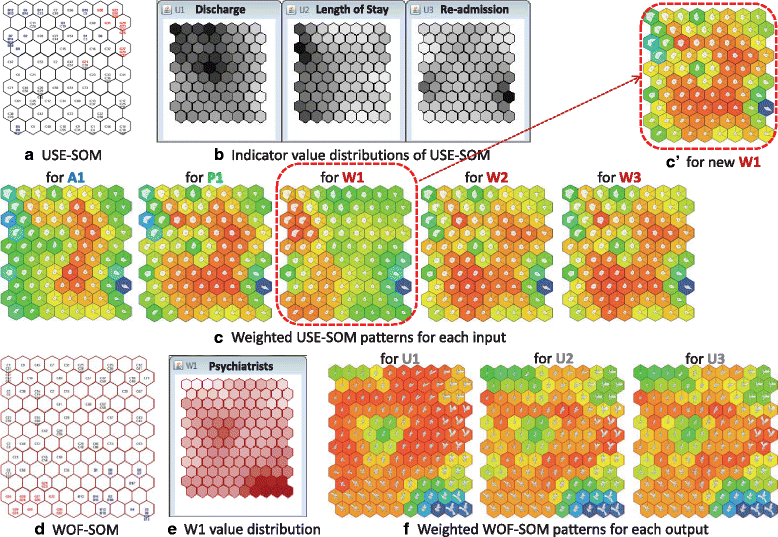Use of the self-organising map network (SOMNet) as a decision support system for regional mental health planning
- PMID: 29695248
- PMCID: PMC5922302
- DOI: 10.1186/s12961-018-0308-y
Use of the self-organising map network (SOMNet) as a decision support system for regional mental health planning
Abstract
Background: Decision-making in mental health systems should be supported by the evidence-informed knowledge transfer of data. Since mental health systems are inherently complex, involving interactions between its structures, processes and outcomes, decision support systems (DSS) need to be developed using advanced computational methods and visual tools to allow full system analysis, whilst incorporating domain experts in the analysis process. In this study, we use a DSS model developed for interactive data mining and domain expert collaboration in the analysis of complex mental health systems to improve system knowledge and evidence-informed policy planning.
Methods: We combine an interactive visual data mining approach, the self-organising map network (SOMNet), with an operational expert knowledge approach, expert-based collaborative analysis (EbCA), to develop a DSS model. The SOMNet was applied to the analysis of healthcare patterns and indicators of three different regional mental health systems in Spain, comprising 106 small catchment areas and providing healthcare for over 9 million inhabitants. Based on the EbCA, the domain experts in the development team guided and evaluated the analytical processes and results. Another group of 13 domain experts in mental health systems planning and research evaluated the model based on the analytical information of the SOMNet approach for processing information and discovering knowledge in a real-world context. Through the evaluation, the domain experts assessed the feasibility and technology readiness level (TRL) of the DSS model.
Results: The SOMNet, combined with the EbCA, effectively processed evidence-based information when analysing system outliers, explaining global and local patterns, and refining key performance indicators with their analytical interpretations. The evaluation results showed that the DSS model was feasible by the domain experts and reached level 7 of the TRL (system prototype demonstration in operational environment).
Conclusions: This study supports the benefits of combining health systems engineering (SOMNet) and expert knowledge (EbCA) to analyse the complexity of health systems research. The use of the SOMNet approach contributes to the demonstration of DSS for mental health planning in practice.
Keywords: Decision support systems; Evidence-informed policy planning; Expert knowledge; Expert-based collaborative analysis; Health systems engineering; Interactive visual data mining; Key performance indicator; Mental health system; Self-organising map network.
Conflict of interest statement
Ethics approval and consent to participate
The study was approved by the Human Research Ethics Committee (HRECs) at The University of Sydney, Australia. This ethics approval was on the project titled ‘A study on the feasibility of SOMNet for improving evidence-informed health policy planning’ (Approval Number: 2017/051) for the domain expert participation to provide their feedback on the model evaluation.
Consent for publication
All participants for the model validation in this study gave signed consent to participate, provide feedback and be acknowledged in publications.
Competing interests
The authors declare that they have no competing interests.
Publisher’s Note
Springer Nature remains neutral with regard to jurisdictional claims in published maps and institutional affiliations.
Figures







References
-
- De Savigny D, Adam T. Systems Thinking for Health Systems Strengthening. Alliance for Health Policy and Systems Research. Geneva: World Health Organization; 2009.
MeSH terms
Grants and funding
LinkOut - more resources
Full Text Sources
Other Literature Sources

